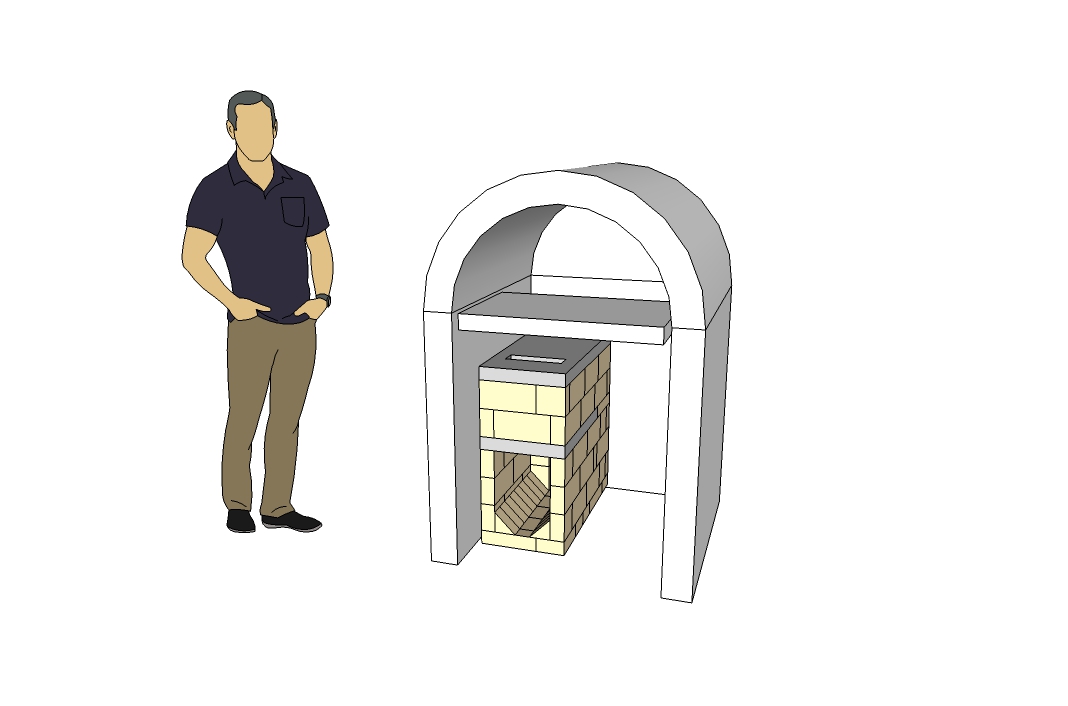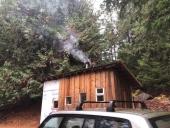
 30
30





Blog: 5 Acres & A Dream
Books: Kikobian Books | Permies Digital Market
 8
8





 13
13




For all your Montana Masonry Heater parts (also known as) Rocket Mass heater parts.
Visit me at
dragontechrmh.com Once you go brick you will never go back!
 6
6




'What we do now echoes in eternity.' Marcus Aurelius
How Permies Works Dr. Redhawk's Epic Soil Series
 11
11




 9
9




regards, Peter
 8
8




Rocket surgeon and soil builder... healthy plants are all about the soil.
- My 6" Batch Rocket specs and materials list: https://permies.com/t/248275/Batch-Rocket-Double-Skin-Bell
- Batch Rocket detailed build thread with Q&A: https://permies.com/t/238503/Batch-Rocket-Build
 8
8




Isaac Workman wrote:I'm curious about the oven portion (is that what it is?) - it'd be neat to see updates on temperature and use
Blog: 5 Acres & A Dream
Books: Kikobian Books | Permies Digital Market
 9
9




Peter van den Berg wrote:I know how the core should perform, of course, but not sure about this one. Any smoke from the chimney to be seen? That is to say, real smoke, not the white-ish water vapor that dissolves in the air within a few yards.
Love to hear how it all work out for you!
Blog: 5 Acres & A Dream
Books: Kikobian Books | Permies Digital Market
 11
11




Leigh Tate wrote:With our design, what would cause it to smoke?
Leigh Tate wrote:I'm thinking we got it right, but what could improve it?
regards, Peter
 8
8




 9
9




Peter van den Berg wrote:I'd like to know what the internal dimensions of the bell are, what the floor area and the spacing from the side and rear walls, all internal of course.
In case you are using a stove pen-thermometer in the pipe, what are its readings while running flat out?
Blog: 5 Acres & A Dream
Books: Kikobian Books | Permies Digital Market
 7
7




Scott Weinberg wrote:Leigh,
I am curious, with your off set stove, (in the bell) are you noticing any difference of bell temp on bell side closest to the stove vs the opposing side?
And your black oven, have you run it long enough to predict "time to X temp and/or time at a somewhat consistent temp for baking"?. Such as 350 F for X amount of hours or anything like that. AS far as that goes, I have never baked in a black oven, Does bread have a completely different look and taste? I presume, but only guessing this would be done, after the fire is out?
Did you install any temp sensors just to watch differences in locations?
Blog: 5 Acres & A Dream
Books: Kikobian Books | Permies Digital Market




 5
5




For all your Montana Masonry Heater parts (also known as) Rocket Mass heater parts.
Visit me at
dragontechrmh.com Once you go brick you will never go back!
 9
9




Leigh Tate wrote:
We were mostly just thinking "I hope this works" rather than the tech aspects. For now, I'm just using the touch method to monitor. Probably not surprising, the center heats up first and then the base and arch.Scott Weinberg wrote:Leigh,
I am curious, with your off set stove, (in the bell) are you noticing any difference of bell temp on bell side closest to the stove vs the opposing side?
 5
5




Silence is Golden
For all your RMH needs:
dragontechrmh.com
 6
6




thomas rubino wrote:Did Dan use clay mortar or cement on the bell bricks?
Blog: 5 Acres & A Dream
Books: Kikobian Books | Permies Digital Market
 4
4




Blog: 5 Acres & A Dream
Books: Kikobian Books | Permies Digital Market




 11
11




![Filename: 20241109_094637.jpg
Description: [Thumbnail for 20241109_094637.jpg]](/t/269879/a/254006/20241109_094637.jpg)
For all your Montana Masonry Heater parts (also known as) Rocket Mass heater parts.
Visit me at
dragontechrmh.com Once you go brick you will never go back!
 7
7





regards, Peter
 5
5




 7
7




Peter van den Berg wrote: I made a small drawing without front for this purpose and it looks surprisingly small.
Blog: 5 Acres & A Dream
Books: Kikobian Books | Permies Digital Market
 8
8




Blog: 5 Acres & A Dream
Books: Kikobian Books | Permies Digital Market
 7
7




 4
4




Blog: 5 Acres & A Dream
Books: Kikobian Books | Permies Digital Market
 4
4




 7
7




Cristobal Cristo wrote:Is your intention to bake when the firebox is burning or after the coals died out?
In case of rocket heater with oven at the riser top, it will affect the draft and general performance of the heater. It's difficult to have all-in-one, as specialized devices work better than multifunctional.
Blog: 5 Acres & A Dream
Books: Kikobian Books | Permies Digital Market
 6
6




Invasive plants are Earth's way of insisting we notice her medicines. Stephen Herrod Buhner
Everyone learns what works by learning what doesn't work. Stephen Herrod Buhner
 5
5




Thank you in advance to everyone for their replies, help, and suggestions! Forgive me if I miss any replies, I'm still learning how to keep up with threads I participate in!

|
It's hard to fight evil. The little things, like a nice sandwich, really helps. Right tiny ad?
The new gardening playing cards kickstarter is now live!
https://www.kickstarter.com/projects/paulwheaton/garden-cards
|









